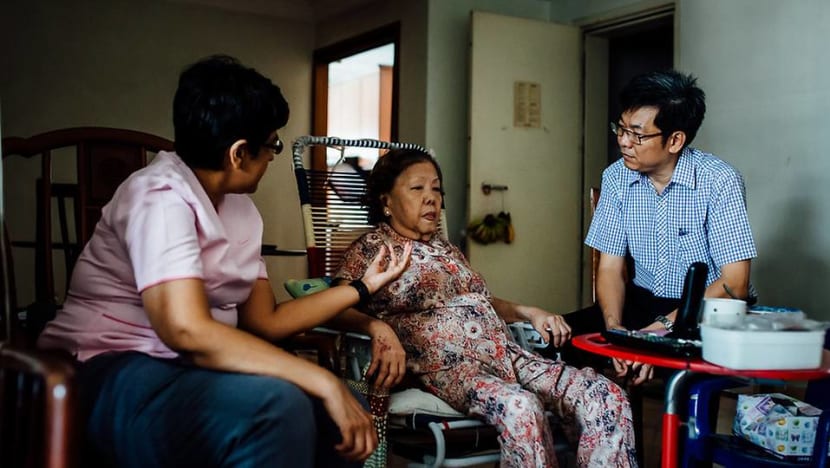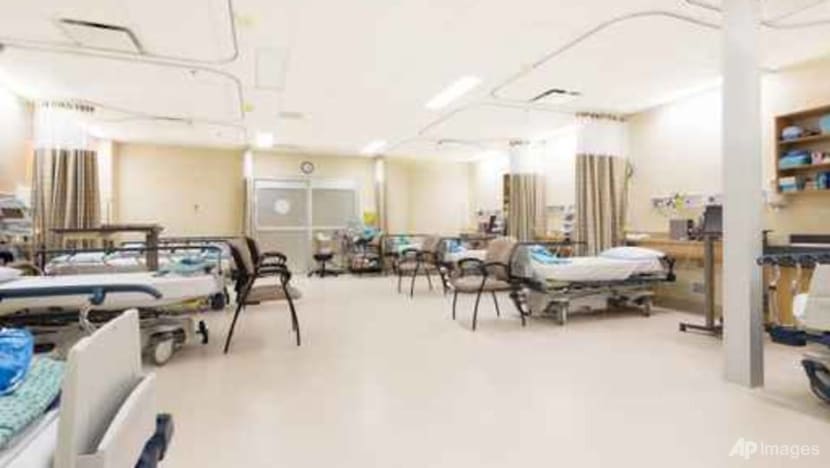commentary Singapore
Commentary: For the dying, home hospice care offers a ray of hope
Home hospice care differ from facility-based hospice care in important ways that lifts the patient's spirit.

Singaporeans also have the option of home hospice care at the end of their lives. (Photo: HCA Home Hospice Care)
SINGAPORE: Before the iconic Steve Jobs of Apple fame died of pancreatic cancer in 2011, he spoke poignantly of his terminal illness: “Remembering that you are going to die is the best way I know to avoid the trap of thinking you have something to lose. There is no reason not to follow your heart.”
This is the kind of inspirational philosophy that should resonate when we think about how to approach healthcare for those with terminal illness.
As Singapore’s largest home hospice care provider, HCA provides free services to about 70 per cent of home hospice patients in Singapore. We operate both home hospice care and a day care service for patients who are well enough to move about independently and would enjoy social activities in a communal setting.
Patients are accepted based on referrals from their primary care doctor and must meet specified criteria.

We see an average of about 800 patients with life-limiting illnesses at any one time, with about 3,500 admissions per year. Patients who are referred to us typically have a prognosis of 12 months or less. Our average length of service is about three months.
While these statistics may seem bleak, the miracle of life always seem to defy the odds: While 2,000 of the admissions each year do pass on, there are about 700 patients who are discharged.
Just imagine, one in five of our patients may be well enough to be discharged. They may go back to their own primary physicians for ongoing standard care and other regular home medical care services. Some even return to their own family GPs (general practitioners) just like before.
Based on a report in the New England Journal of Medicine, research has demonstrated that a group of lung cancer patients under palliative care not only lived longer compared to those receiving standard care, they also had a better quality of life and enjoy better mental well-being.
These patients also experienced significantly lower depressive symptoms than those in the standard care groups, according to the same report.
Although many researchers are still trying to decipher what exactly contributed to this astonishing finding, it is actually not a surprise to practitioners like us who do encounter some amazing outcomes among our patients.
Many come to us with an initial prognosis of a few months, but go on to live out their supposed terminal illness for many years.
A RAY OF LIGHT IN THOSE LAST DARK DAYS
There are key differences between home hospice care and institutional care where patients receive palliative care within a healthcare facility.
Indeed, there are economic arguments for moving those with terminal illness to a separate facility where they can be collectively taken care of by dedicated and trained staff on hand, and looked after 24/7 to help them manage their symptoms and ensure their safety as they move about.
For families with no one around to take care of these patients, this option may indeed be the best option.
Although hard-won health and safety practices and rules may win over family members, however, patients in these facilities and their loved ones are subject to various regulations including restrictions on visiting hours and meal times.
In all fairness, this is necessary to avoid disruptions to and ensure the smooth running of such healthcare facilities.

But for many patients already having to deal with the idea that a terminal illness is cutting their lifespan short, is moving into a new environment, without the warm familiarity of “normal” family life, really a better alternative?
We must ask ourselves, is a life of safety what most people want for themselves in those last stages? What do these restrictions mean for the patient’s sense of control and individuality, for people who are living their last days?
Do they feel a sense of fear and despair when they are housed in the same place with others “in the same situation”? Are they not constantly reminded of the painful realities and the close to little chance they have of surviving their condition?
In this regard, home hospice care, which provides daily door-to-door visits with meals and activities for patients, can be a ray of light in their lives.
During each session, nurses render medical services including pain management and change of dressing, as well as non-clinical services including counseling family members to prepare them mentally for the eventuality of the patient’s passing.
HCA provides home hospice care for free as we understand that living within an institution or some other medical facility may be expensive and often not necessary for the patient who will be better off living with his or her family.
With a medical professional just a phone call away and pacing alongside at every step of their journey, patients have fuller assurance and confidence to face the path ahead.

More importantly, they are enabled to life their lives out as “normally” and independently as possible, giving them personal dignity and individual freedom.
To answer why patients who receive palliative care seem to lead better lives, perhaps not all things are found in quantifiable data – death is real, but so is hope. When one struggles with unrelieved pain from progressive disease, the will to live can only wane.
However, this will to live and strive on can be re-ignited when hospice care staff facilitate important conversations about facing and even conquering fears.
The positive impact of this open discussion on patients, caregivers and families can be great. The mindful, compassionate and patient-centred approach to care brings dignity to the process.
This dignity often gets lost when one falls gravely ill and has to depend on others for simple, daily chores. It is ironic that dignity is what patients seek most as they face their final challenges in life.
FINDING A MUTUAL FRIENDSHIP IN THE FINAL JOURNEY
Nurses who travel to our patients’ doorsteps are not just healthcare staff; they become so sensitised to patients’ personal needs that they go the extra mile to address non-clinical issues: This includes cutting their hair, helping with household chores and even finding volunteers to photograph family portraits for patients and their loved ones.
One nurse I know even went as far to arrange for a five-year-old boy to visit the zoo because he loved dinosaurs and wanted to see one such exhibition held there.
Others also facilitate patients' request to leave behind a lasting legacy through special projects. Whether these are their personal expressions in artwork, or a cookbook of treasured family recipes, these projects have helped many patients and families find a more complete closure.
In all these, I find that our people involved in home hospice care have suddenly become more than palliative care practitioners to our patients. They have become family friends.
And this friendship is mutual because our patients in turn enrich our own lives. In the many earnest conversations we have had with patients, we were privileged to witness their finding meaning in suffering and demonstration of courage and grace despite the ravages of their debilitating illnesses.
These courageous qualities that are brought to bear serves to underscore the critical spiritual care that resonates throughout our care approach. This elusive element of uplifting the spirit often defies objective, clinical measurements.
Our care philosophy is to assist the terminally ill live well while at home and more than 50 per cent of our patients are able to pass on comfortably, surrounded by the care and love of their family members.
While we all have to make the final journey ourselves, it is perhaps not the distance we should focus on, but the daily pace of the final lap.
Dr Chong Poh Heng is the Medical Director of HCA Hospice Care.
This is the fourth commentary in Channel NewsAsia's series exploring key issues and challenges facing patients with terminal illness and care at the end of life.
Read the first commentary on what well-being means for someone with terminal illness here.
Read the second commentary on the challenges faced by youth who contract terminal illness, for whom growing old isn't an option here.
Read the third commentary on the debate on whether at life's end, people should spend their last days in the hospital here.














